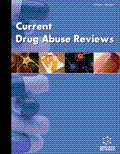Abstract
It is widely believed that growth hormone (GH) is abused by athletes for its anabolic and lipolytic effects. Many of the physiological effects of GH are mediated by the production of insulin-like growth factor-I (IGF-I). Both GH and IGF-I appear on the World Anti-Doping Agency list of prohibited substances. Little is known, however, about the prevalence of abuse with exogenous IGF-I. IGF-I has effects on carbohydrate, lipid and protein metabolism and some of these actions could prove beneficial to competitive athletes. No studies have demonstrated a positive effect of IGF-I on physical performance in healthy individuals but this has not yet been studied in appropriately designed trials. Two pharmaceutical preparations of IGF-I have recently become available for the treatment of growth disorders in children. This availability is likely to increase the prevalence of IGF-I abuse. Combining IGF-I with its binding protein IGFBP-3 in one preparation has the potential to reduce the side-effect profile but the adverse effects of long term IGF-I abuse are currently unknown. Detection of abuse with IGF-I is a major challenge for anti-doping authorities. It is extremely difficult to distinguish the exogenous recombinant form of the hormone from endogenously-produced IGF-I. One approach currently being investigated is based on measuring markers of GH and IGF-I action. This has already proved successful in the fight against GH abuse and, it is hoped, will subsequently lead to a similar test for detection of IGF-I abuse.
 5
5















